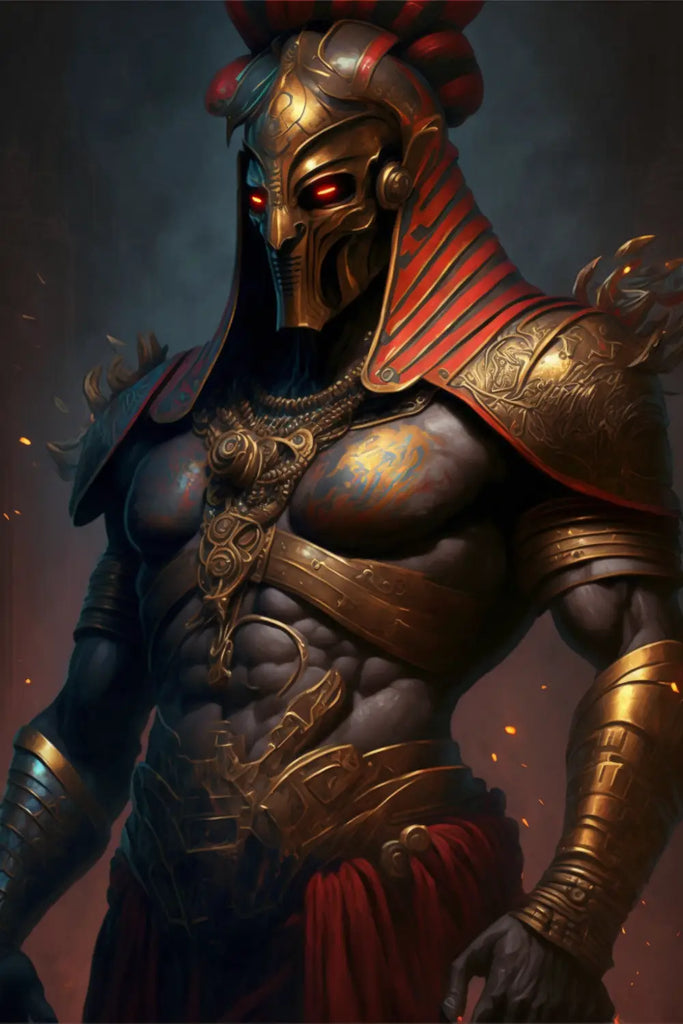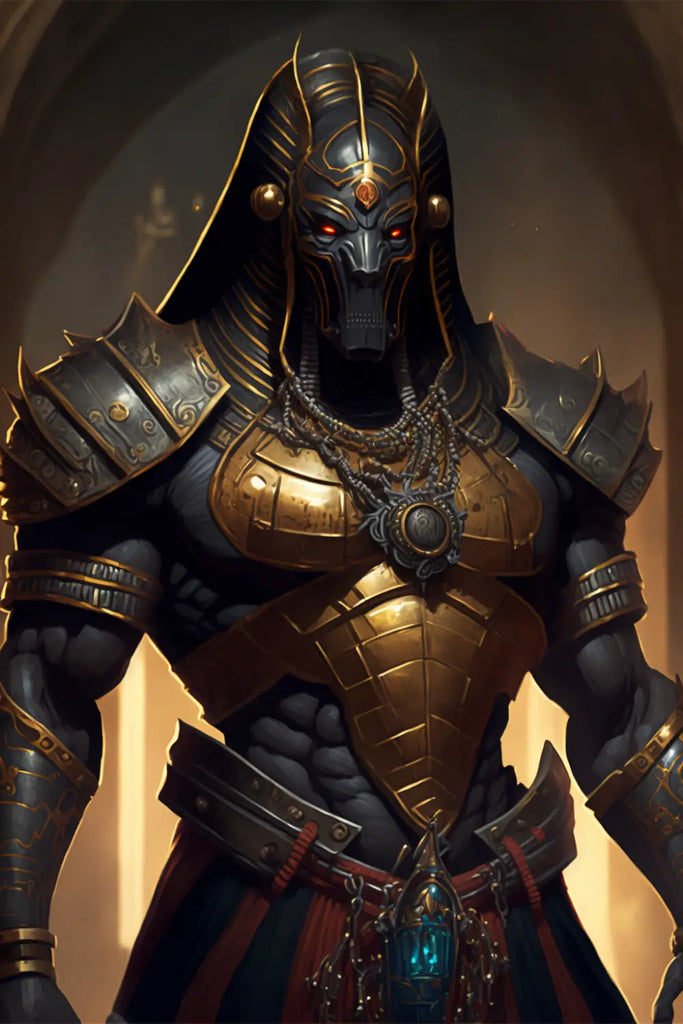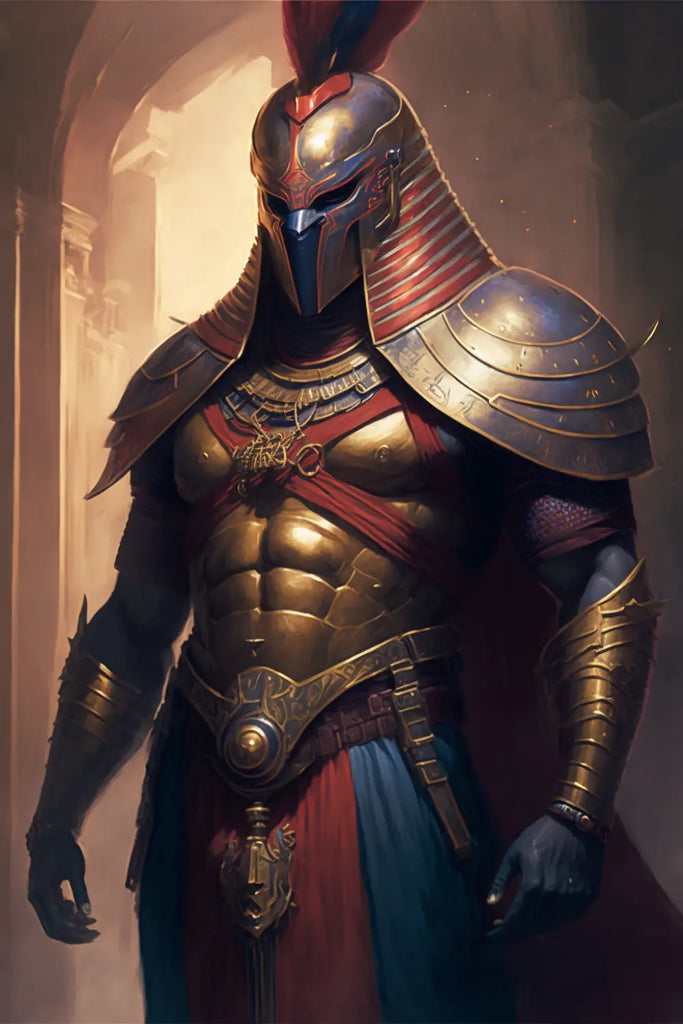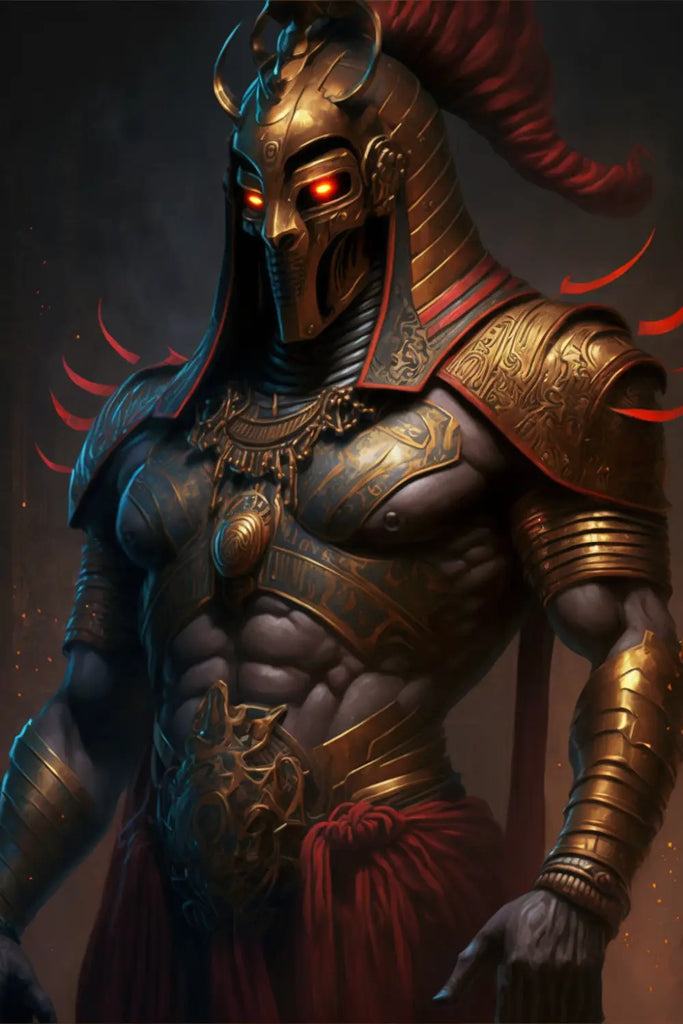Long ago, in the time before time, there existed only darkness and chaos. The gods and goddesses of ancient Egypt resided in this realm, but they yearned for a world of order, beauty, and harmony. Among these deities was Ptah, the god of craftsmen, architects, and creators. Ptah was determined to bring forth a world filled with life, and he knew that he had to use his unparalleled mastery of the arts and crafts to achieve this goal.
Ptah, the Divine Craftsman, was said to be born from the very heart of creation, the primordial mound. He was the master of all arts and crafts, and his divine powers would be the key to shaping a new world. With great determination, Ptah began to speak the words that would set in motion the creation of the universe.

The world was to be a place of balance, beauty, and harmony, and Ptah's craftsmanship would be evident in every aspect of it. First, Ptah sculpted the land from the primordial clay, molding the mountains, valleys, and plains with his skilled hands. As he worked, he imbued the earth with his creative essence, ensuring that every rock, tree, and blade of grass would carry the mark of his divine artistry.
Next, Ptah turned his attention to the sky, envisioning a vast expanse that would provide the world with light and warmth. Using his divine powers, he forged the sun and the moon, placing them high in the heavens to illuminate the world below. Ptah's skill in metalworking was unrivaled, and he crafted intricate golden chariots for the sun and moon, allowing them to journey across the sky in a majestic dance of light and darkness.
With the earth and sky in place, Ptah turned his focus to the waters that would sustain life. He carved out the mighty Nile River, guiding it through the heart of Egypt to provide nourishment to the land and its people. Ptah also created the vast oceans, lakes, and rivers that would cover the earth, ensuring that they teemed with life and provided bountiful resources for all living beings.

Ptah's next task was to create the diverse array of plants that would cover the earth. He carefully selected each type of plant, imbuing them with unique properties and colors. As the god of craftsmen, Ptah took great care in designing every leaf, flower, and seed, ensuring that each plant would be a testament to his artistic mastery. The world now had an abundance of vegetation, providing food, shelter, and beauty for all living beings.
The time had come for Ptah to create the animals that would inhabit the earth. He lovingly sculpted each creature from clay, breathing life into them with his divine breath. Ptah crafted a wide variety of animals, from the tiniest insects to the largest mammals, each reflecting his artistic genius. He placed these creatures in their respective habitats, ensuring that they would live in harmony with one another and their surroundings.
Ptah knew that the world needed caretakers, beings who would appreciate and nurture the beauty and balance he had created. And so, he fashioned the first humans, molding them from the earth itself and imbuing them with his divine essence. To these humans, Ptah imparted his knowledge of the arts and crafts, teaching them how to harness their creative potential to build a thriving civilization.
As the first people began to settle and establish communities, Ptah continued to guide them in their creative pursuits. He taught them the art of pottery, showing them how to craft useful vessels from the very earth that had given them life. He also instructed them in the art of weaving, transforming simple fibers into beautiful textiles that would provide clothing and warmth for their growing civilization.
Ptah's influence extended to the realm of architecture, as he shared his divine knowledge of building and construction with the people. They learned to create structures that were not only functional but also aesthetically pleasing, reflecting the harmony and balance that Ptah had envisioned for the world. Magnificent temples, palaces, and monuments were erected in his honor, each a testament to his divine craftsmanship and the skills he had imparted to the people.

As the Egyptian civilization flourished, Ptah's wisdom and teachings were passed down through generations of craftsmen, artisans, and architects. They honed their skills and developed new techniques, further refining the arts that Ptah had introduced to them. Over time, the Egyptians became renowned for their mastery of the crafts, creating stunning works of art that have endured for millennia.
But Ptah's influence was not limited to the physical world. He also played a vital role in the spiritual realm, guiding the souls of the deceased on their journey to the afterlife. As the god of craftsmen, Ptah was intimately familiar with the process of creation and transformation. He understood that death was not an end but rather a new beginning, a transformation of the soul from one form to another.
Ptah's compassion and wisdom led him to establish the process of mummification, a sacred art that ensured the preservation of the body and the soul's safe passage to the afterlife. The Egyptians believed that the intricate process of mummification, which involved carefully preparing and preserving the body, was a reflection of Ptah's divine craftsmanship. Through this sacred ritual, the Egyptians paid homage to Ptah and ensured that their loved ones would be guided by his divine wisdom on their journey to the afterlife.

As the Egyptian civilization continued to grow and evolve, Ptah's teachings remained a cornerstone of their culture. The people never forgot the divine craftsman who had shaped their world and imparted his knowledge of the arts to them. They honored him through their own creative endeavors, striving to emulate his mastery of the crafts in their daily lives.
And so, the legend of Ptah, the Divine Craftsman, lives on, a testament to the power of creativity and the enduring influence of the arts. His story is a reminder that the world we live in is a product of divine craftsmanship, shaped by the hands of a god who valued beauty, harmony, and balance above all else. As we continue to explore and develop our own artistic skills, we can look to Ptah for inspiration, seeking to emulate his divine mastery of the crafts and create a world that reflects the beauty and balance he envisioned for us.
In conclusion, the legend of Ptah, the Divine Craftsman, serves as a powerful testament to the importance of creativity, craftsmanship, and the arts in the world. As the god who shaped the earth, sky, waters, plants, animals, and humans, Ptah's influence is evident in every aspect of our world. His teachings, passed down through generations of craftsmen, artisans, and architects, continue to inspire and guide us in our own creative pursuits. By honoring Ptah and striving to emulate his divine craftsmanship, we can work together to create a world filled with beauty, harmony, and balance, just as he envisioned.
















